Beautiful music soared from the modest stone basilica ahead as we paused for a moment to hear what sounded like the singing of a multitude of angels. Approaching the Chapel of the Angels with its tent-shaped architecture, Mark Ziese, our guide and archaeologist explained that the acoustics of this church augments sound and magically creates an angelic resonance.
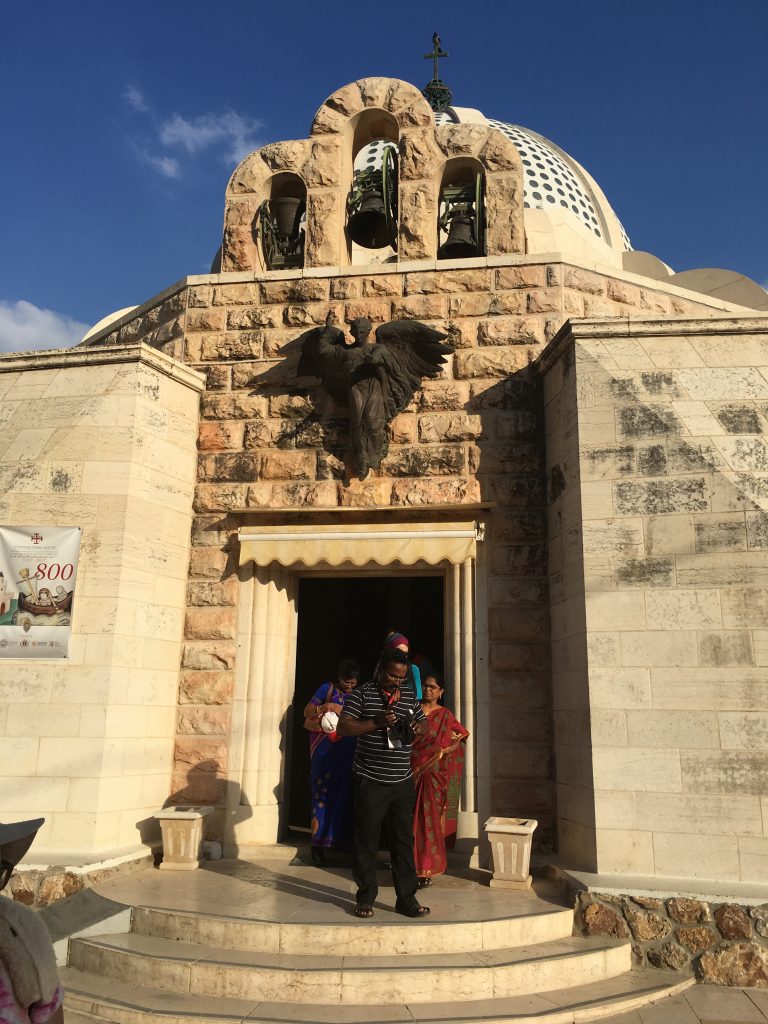
We had arrived in the small town of Beit Sahur. Considered since ancient times as the place where a multitude of angels announced the birth of the Messiah, the chapel, decorated with a bronze angel, was built in 1954 to commemorate the miraculous event.
“And there were in the same country shepherds abiding in the field, keeping watch over their flock by night. And the Angel said to them, Fear not, for behold, I bring you good tidings of great joy, which shall be to all people” (Luke 2:8-10).
The Chapel of the Angels was designed by Antonio Barluzzi and built near a monastery as well as the ruins of a 4th century subterranean church which is associated with St. Helena, the mother of Emperor Constantine. The structure is dodecagonal (12 sides) in shape with five apses, reminiscent of the nomadic tents of the shepherds.
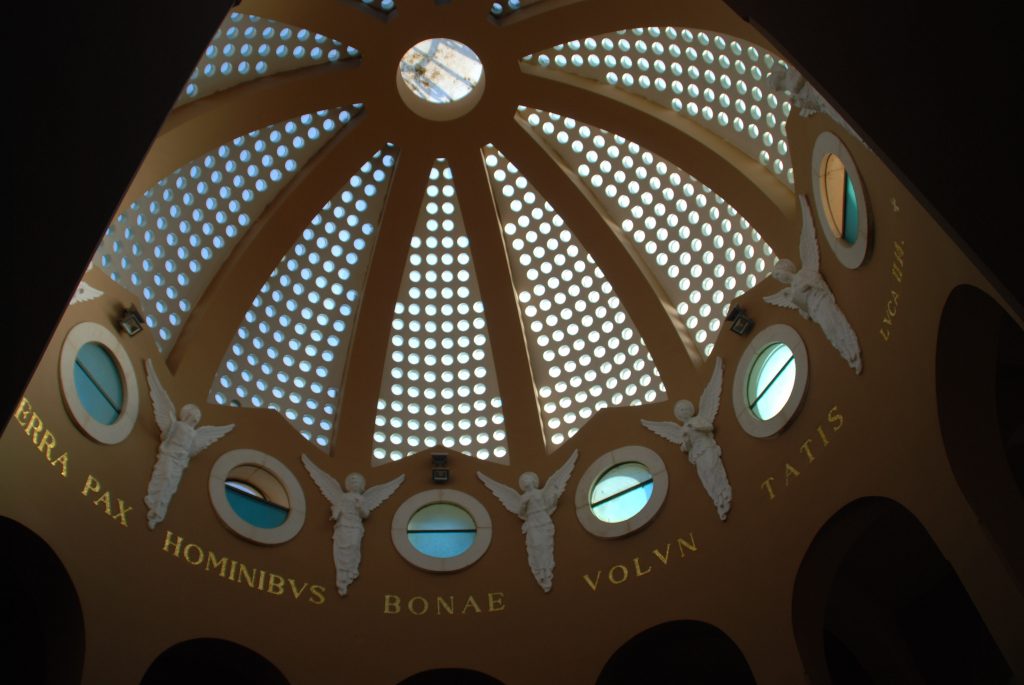
My favorite feature of the Franciscan church is the gorgeous white dome made of concrete and glass that illuminates the interior as if a divine star was shining from above. Beautifully carved angels circle the dome reminding me of the multitude of hosts proclaiming the birth of the Christ Child. In Latin, the angels’ tidings of great joy appears in large gold lettering around the circumference of the dome and there is an altar beneath the high domed ceiling.
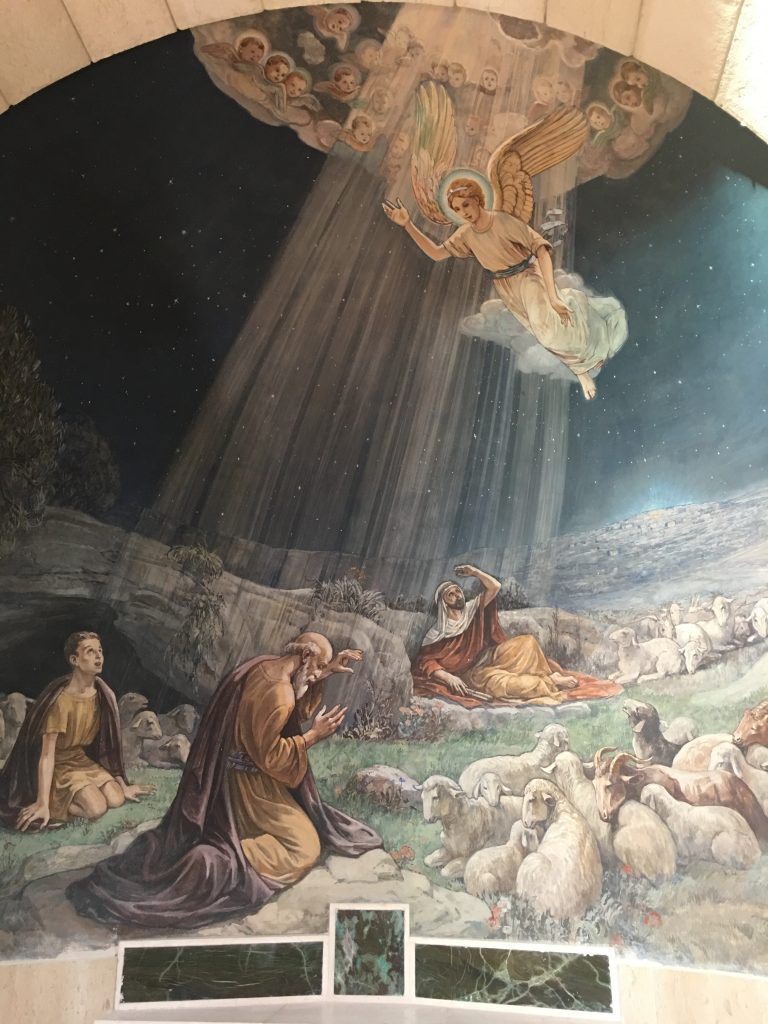
Three painted murals depict the annunciation of the angels, the shepherds and their flock and the Christ Child in the manger. After taking a few moments to examine the detailed murals, we stood around the altar and sang “Silent Night”. The robust harmonies of the hymn were intense, passionate and full of emotion. Believer or not, the moment was enough to move anyone to tears, but as a believer, I felt a spiritual sense of connection, not only to the place, but with the remarkable brothers and sisters surrounding me. It was one of those events during my trip where I “felt in my bones that I was something much larger and was present in the moment as it unfolded before me”, what we referred to on our trip as a thin moment.
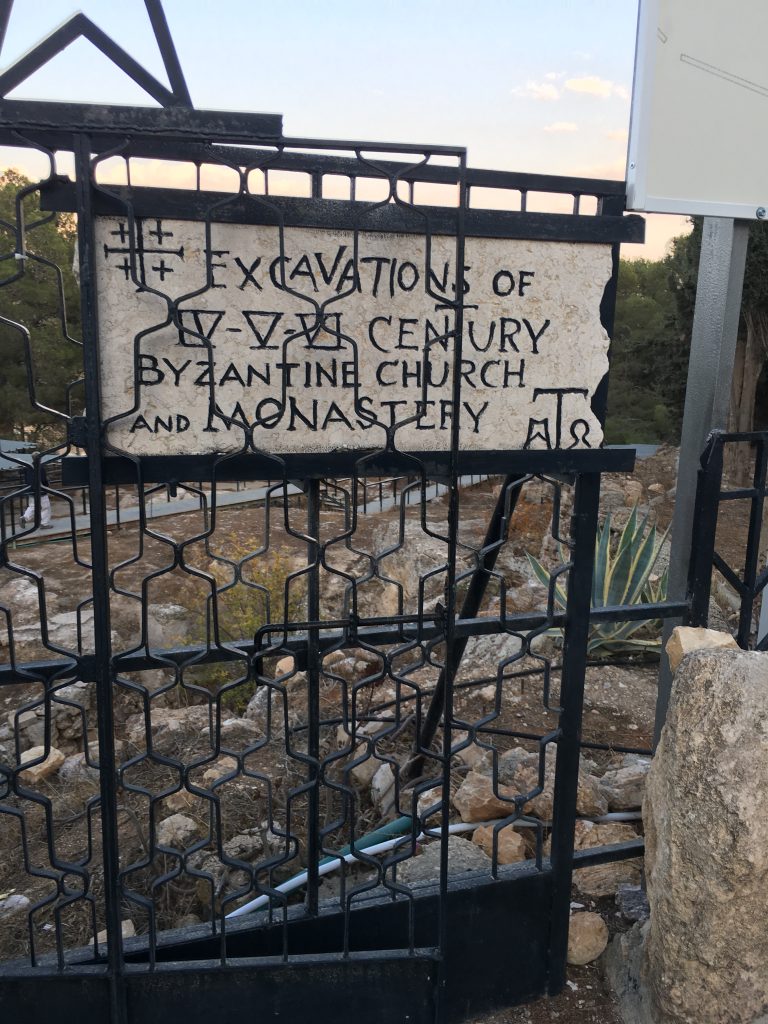
As we exited the chapel, we were led to the location where the excavations of an early century Byzantine church and monastery were taking place. Nearby, we spread out among a seating area which was a cave turned chapel with rough hewn stone walls. Overlooking the Shepherd’s Field we noticed a series of limestone caves. We were provided a few moments to read Luke’s account of the annunciation from the Bible and to imagine ourselves as shepherds in the fields below and how we would have reacted to a multitude of angels appearing in this place.
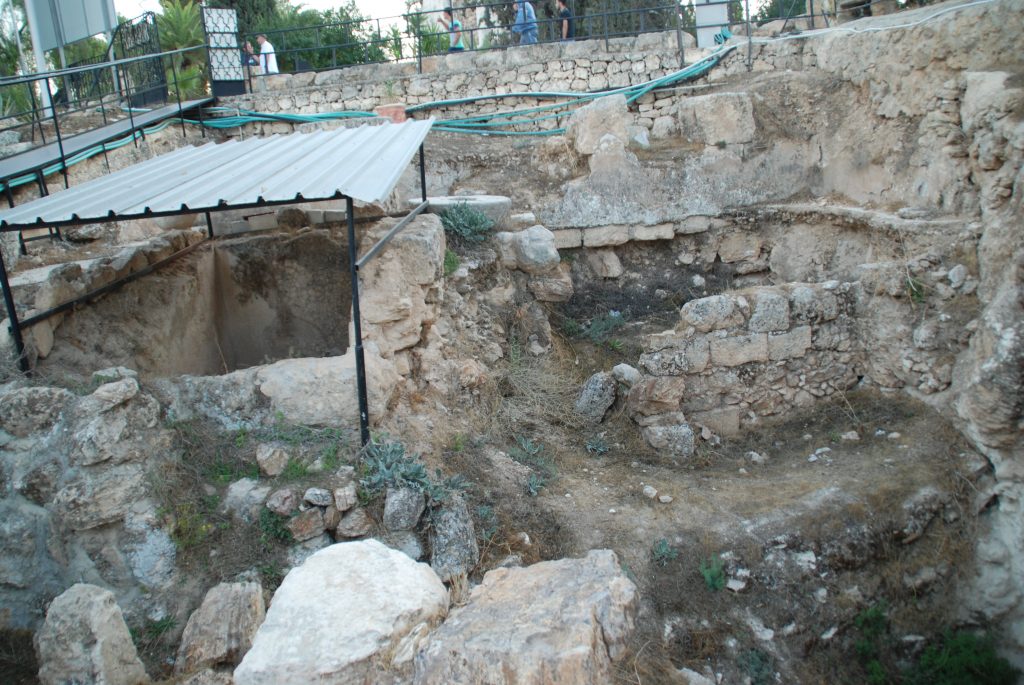
The original 4th century church was mentioned by pilgrim Egeria stating “A big garden is there now, protected by a neat wall all around and there is also a very splendid cave with an altar.” While the church has long since been destroyed, it was thought to have been the burial place of three shepherds and the lower church used by the Greek Orthodox until 1955.
During the 1972 excavations, archaeologists found an oil press, grottoes and burial niches within a vault. In addition, a Byzantine monastery was identified as well as a bakery, cisterns for storing water, courtyards and rooms with mosaics.
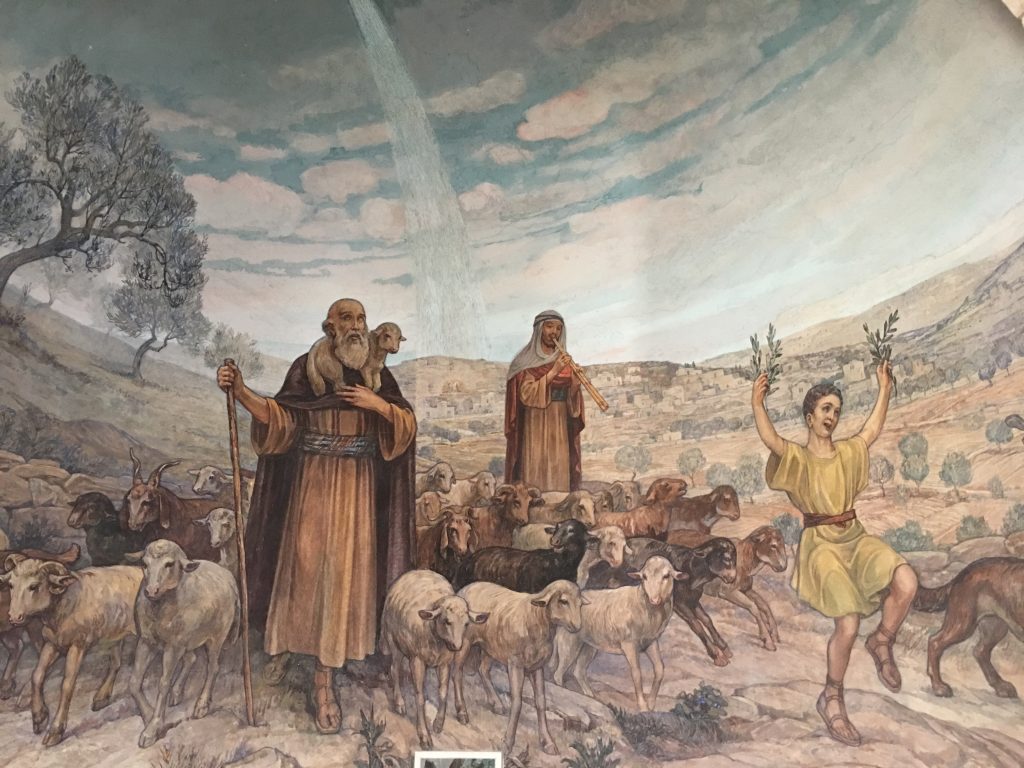
Have you ever wondered why God would choose to announce the coming of the Messiah to a group of lowly shepherds in the fields? When you realize that the Jews considered shepherds as some of the most despised, there is such irony in the angelic annunciation of the King of Kings. Yet, the birth of Jesus was also not a royal event, but a lowly, humble occurrence that has been the reason for the season throughout ages for some and has been the most significant event that has forever changed the lives of others.
“I am the good shepherd. The good shepherd lays down his life for the sheep.” John 10:11
If you have visited the Shepherd’s Field in Bethlehem or have a question about my visit, I would love to hear from you if you would kindly leave a message in the comments section below. Many thanks for your support in reading my blog post and I wish you many Happy Travels!
What to See and What to Do:
The Shepherd’s Field of the Franciscan Custody of the Holy Land
Beit Sahour
Bethlehem, State of Palestine
Telephone: 02 2773135 (Greek Orthodox Site);
02 2772413 (Franciscan Site)
- Admission Fee: No admission fee to enter the church, however, contact the Greek Orthodox or Franciscan church for additional tours and services that may require reservation or additional cost.
- Hours: Greek Orthodox site: daily 8-11:30am, 2-5pm; Franciscan site: daily 8-noon, 2-6pm; Call ahead to ensure entry.
- Amenities: Chapel Services; access to the archaeological site
- Scenic View: Views of the Shepherd’s Field
- Length of Visit: 1-2 hours
- Tips for Your Visit: Dress appropriately for visiting a church with knees and shoulders covered. Respect other visitors as they may provide devotionals at the site. Call ahead to ensure entry.
Where to Stay:
Mount David Hotel
Manger Street
Bethlehem, Palestine
Telephone: +972 2 2766511
Where to Eat:
The Tent Restaurant
Shepherd’s Valley Village
Beit Sahour, Bethlehem, Palestine
Telephone: +972 2 2773875
Try the local cuisine (shawarma and falafel) in an outdoor setting, or under a tent during winter.
What to Eat:
- Kubbeh is similar to falafal in that it is served in a ball but made with meat and spices then deep fried.
- Manqusheh is similar to pizza made with flatbread topped with olive oil and spice (usually za’atar which is similar to thyme)
- Ka’ak is a large pretzel like pastry that is usually eaten at breakfast time. Crunchy on the outside and soft on the inside, they are readily available at bakeries and roadside stalls.
- Potato swirls are similar to french fries, cut and deep fried.
- Qatayef is a pancake-style dessert stuffed with cheese, nuts or sugar and spices and are popular during the Ramadan holiday
- Kunafeh is a pastry similar to baklava covered in syrup and cheese
What to Read:
- The Birds of Bethlehem by Tomie dePaola
- Song of Bethlehem, by Teresa Prins Wood
- The Star of Bethlehem: The Legacy of the Magi by Michael R. Molnar
Photo Guide for Bethlehem:
- The star which marks the supposed location where Jesus was born at the Church of the Nativity
- The Bethlehem Market for colorful merchandise, stalls and restaurants.
- The Wall which is a barrier that separates Bethlehem from Israel which is colorfully decorated with murals
Disclosure: Please refer to our blog disclaimer tab for more information.
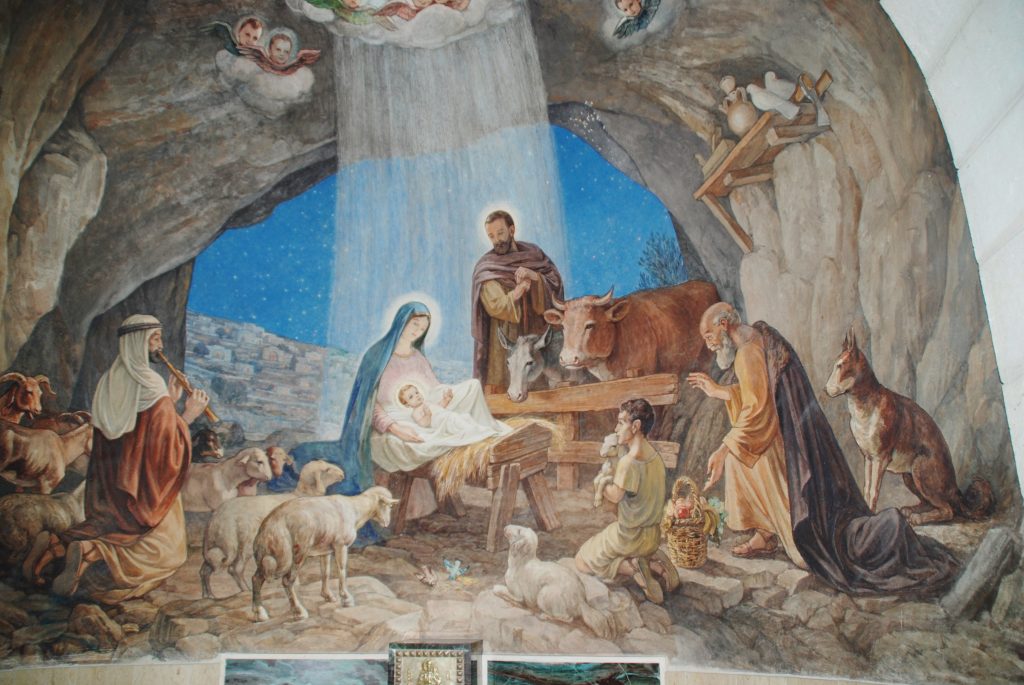
The Nativity Scene: Note the dog and the young boy
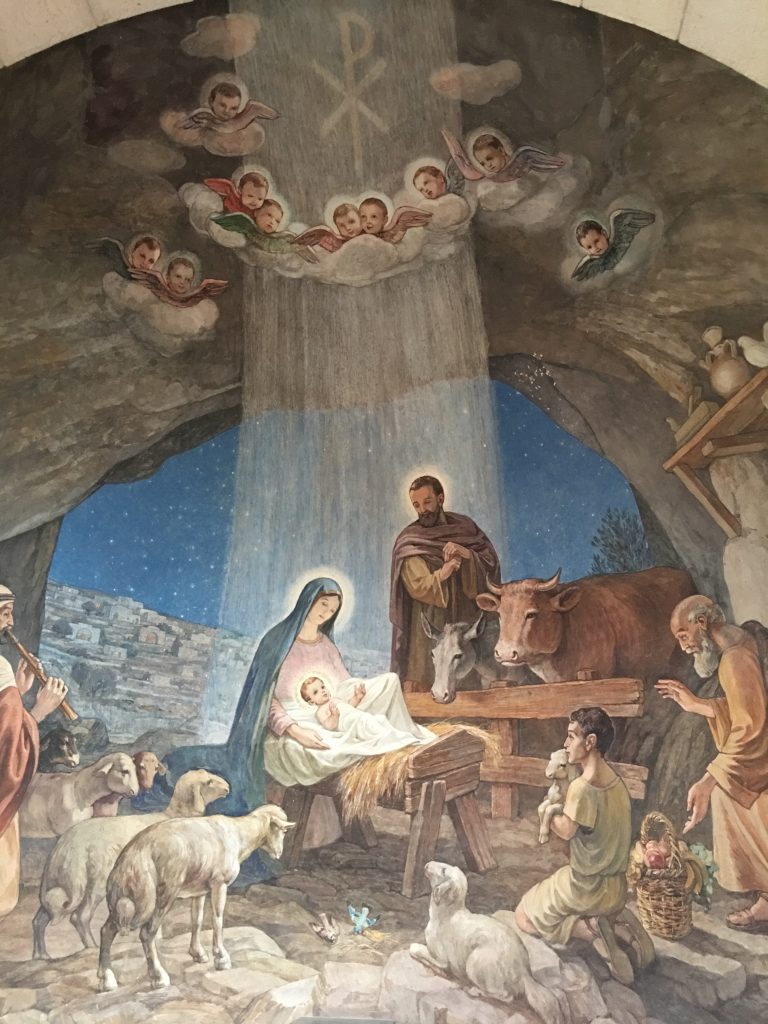
The Nativity Scene with the Angels Above
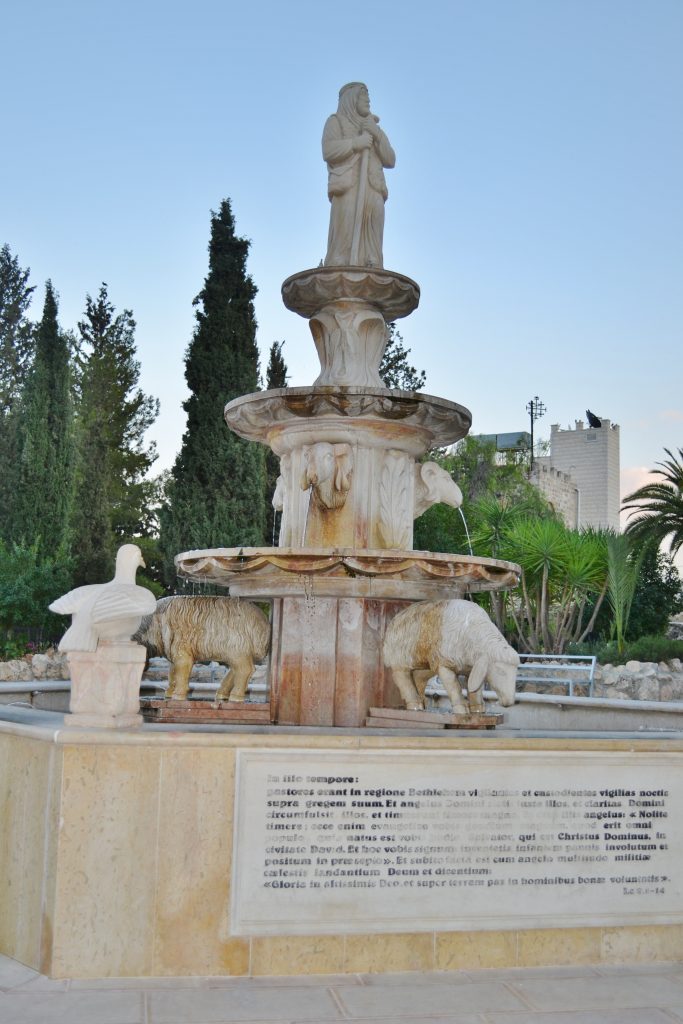
The Shepherd’s Fountain
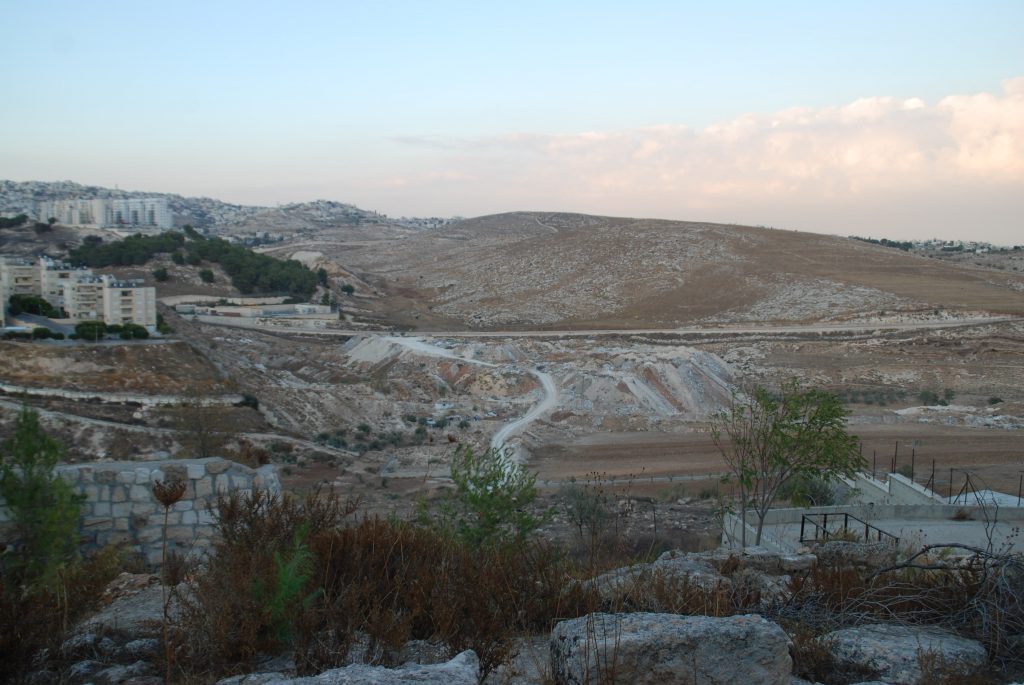
The Shepherd’s Field
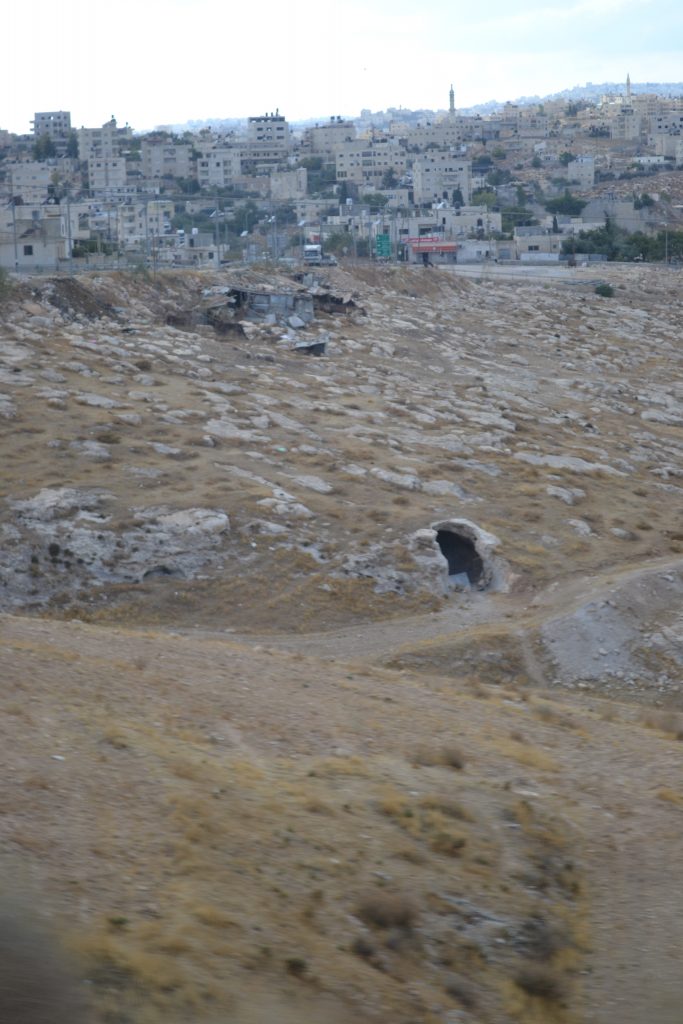
Limestone Caves in Shepherd’s Field